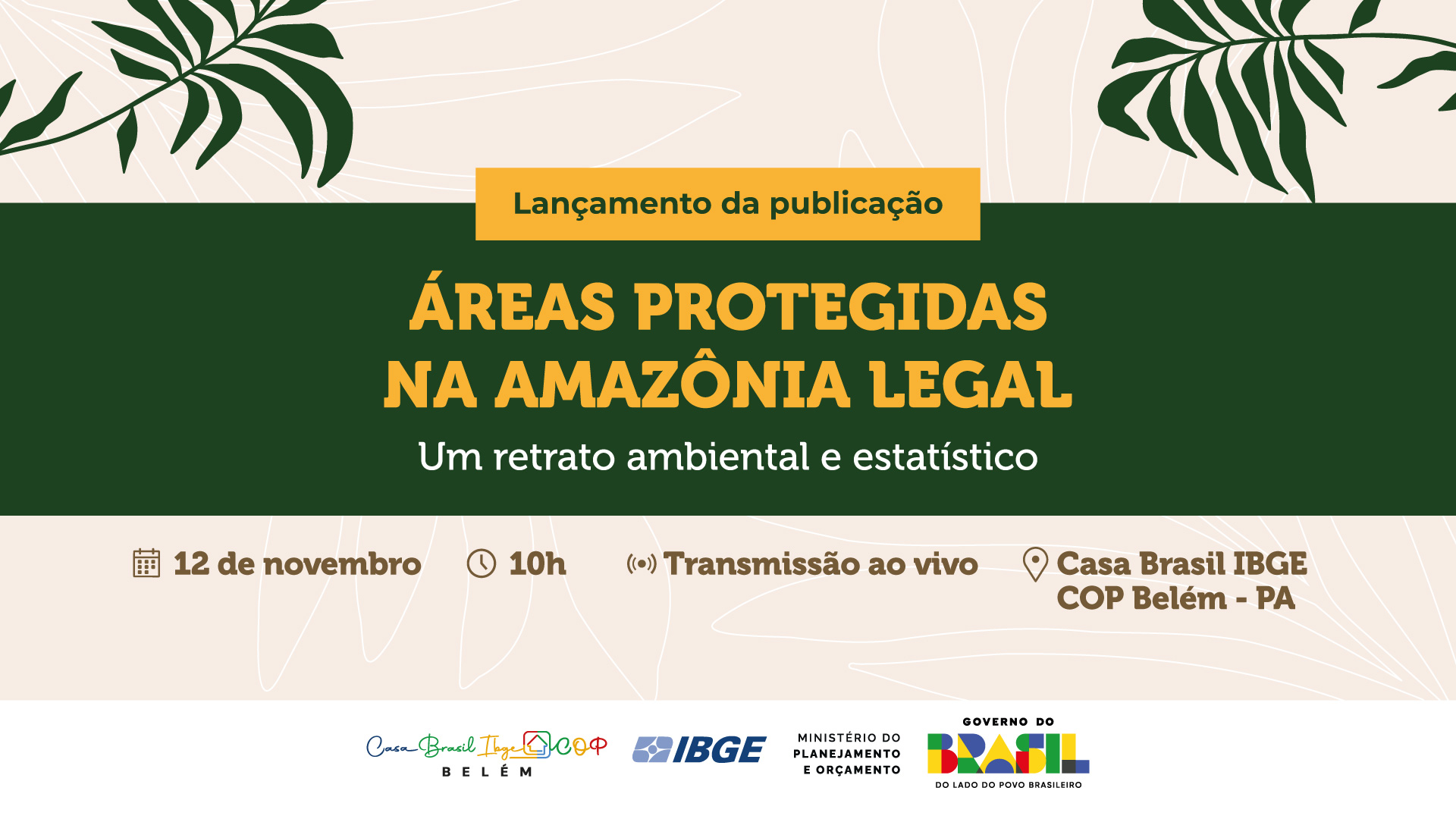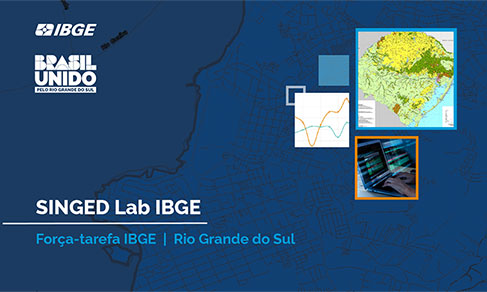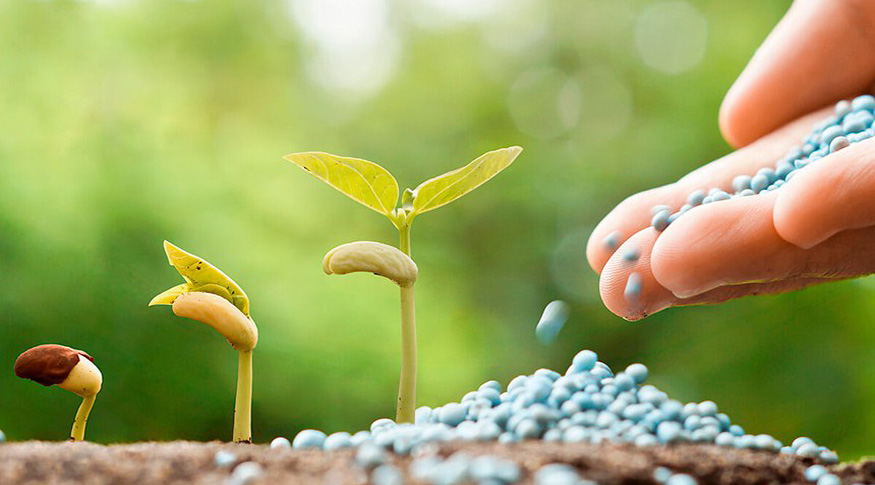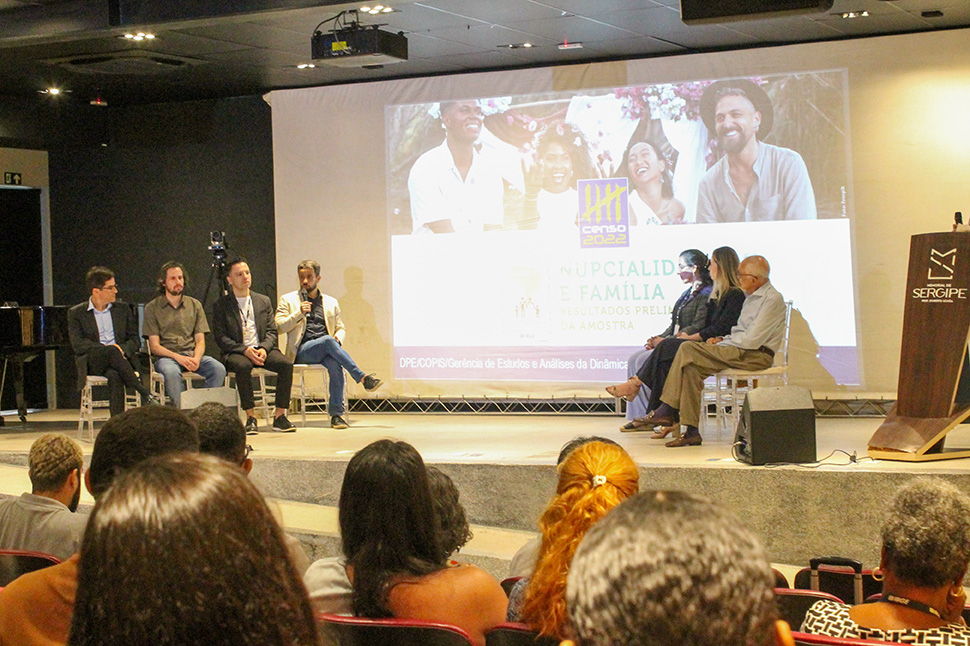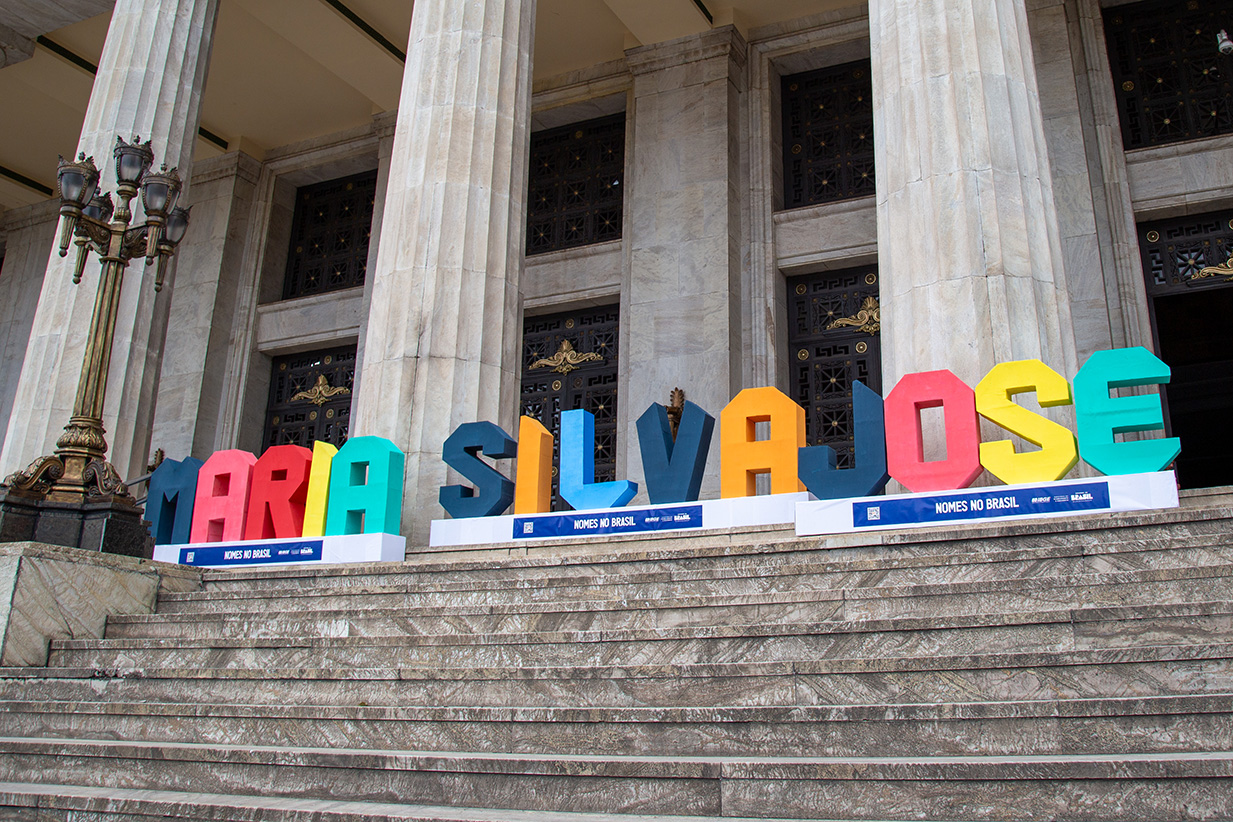Health Satellite Accounts
Affected by the pandemic, consumption of health goods and services dropped by 4.4% in 2020, but increased by 13.3% in 2021
April 05, 2024 10h00 AM | Last Updated: April 09, 2024 11h11 PM
Highlights
- In 2021, final consumption expenditure on health in Brazil amounted to R$ 872.7 billion, which corresponds to 9.7% of the GDP. In the previous year, expenditure on health had amounted to R$ 769.0 billion, that is, 10.1% of the GDP.
- In 2020, both health and non-health goods and services had their consumption affected by the pandemic, with a drop of 4.4% in volume. In 2021, the consumption of health goods and services increased by 10.3%, whereas that of non-good services did by 2.3%.
- Private health services represented the main health-related item for households, and accounted for 63.7% (R$ 318.1 billion) of the total expenditure on health in 2021. Medicines represented 33.7% (R$ 168.3 billion) of the total.
- Concerning gross value added, that is, the share of this activity in GDP, the health sector dropped by 3.9% in 2020 versus 3.1% for other activities. In 2021, value added of health activities increased by 7.4%, and that of non-heath ones, by 4.3%.
- In 2021, gross value added of health activities was R$ 593.1 billion, corresponding to 7.7% of the total in the economy. In 2020, health activities were 6.1% of the total gross value added.
- Health-related activities increased their share of jobs in the country, going from 5.3% of the positions, in 2010 (5.2 million), to 8.0% in 2021 (8.4 million). Compensation paid in the health sector amounted to R$ 372.3 billion and represented 10.5% of the total in the economy in 2021.

In 2021, expenditure on health in Brazil amounted to R$ 872.7 billion. That is equivalent to 9.7% of the Gross Domestic Product (GDP), the sum of all goods and services produced by the country in a year. In 2020, expenditure on health reached R$ 769.0 billion, 10.1% of the GDP. In 2019, before the pandemic, this percentage was 9.6% (R$ 711.9 billion). Information can be found in the Health-Satellite Account, conducted by the IBGE in partnership with Fiocruz, IPEA, ANS and the Ministry of Health.
Both in 2020 and in 2021, households and non-profit institutions serving households (ISFL, in Portuguese) accounted for the highest shares of expenditure on health. In 2020, their contribution amounted to R$ 449.2 billion (5.9% of the GDP), whereas government consumption amounted to R$ 319.8 billion (4.2% of the GDP). In 2021, expenditure of households and non-profit institutions serving households reached R$ 509.3 billion (5.7% of the GDP), and government expenditure added up to R$ 363.4 billion (4.0% of the GDP).
In 2020, consumption of both health and of non-health services dropped by 4.4% in volume. In 2021, consumption of health goods and services increased by 10.3%, whereas that of non-profit goods and services, did by 2.3%.
“Health was a strongly affected sector during the Covid-19 pandemic. In 2020, we observe a drop in the number of outpatient and inpatient care, as medical appointments and elective surgeries. Nevertheless, in 2021 consumption of health goods and services increased, which may be partially attributed to the start of a vaccination campaign against Covid-19, consumption of medicines and the resumption of appointments, exams and elective surgeries, explains Tassia Holguin, analyst of the survey.
As for gross value added, that is, how much an activity adds to GDP, the health sector dropped by 3.9% in 2020, versus 3.1% for other activities. In 2021, other value added of health-related activities increased by 7.4%, and that of non-value added activities, by 4.3%.
“Despite the drop in consumption of goods and services in 2020, the share of expenditure on health increased from 9.6% to 10.1% of the GDP. That was due to the rise of medicine and health services prices, against the total of the economy. The pandemic led to higher expenditure on health by both the government and households,” Ms. Holguin adds. The variation of prices of medicines used in households was 7.1%, whereas, for the government, the rise of prices of public health services supplied reached 29.3%.
In 2020, first year of the pandemic, job posts increased by 1.9%, while other economic activities dropped by 7.0%. The increase of employment in the health sector was mainly observed in Public healthcare (7.0%) and in Production of pharmaceuticals (4.9%), whereas job posts in Private healthcare changed by only 0.2% that year.
In 2021, employment in the health sector increased by 5.1% against 2020, while the average increase of employment in non-health activities reached 5,9%. In 2021, employment in Public health fell by 2.5% versus an increase of 10.8% in Private health.
Brazil’s GDP share of public expenditure on health is among the lowest in comparison with that of other OECD countries
The Health Satellite Account also showed that, in 2021, in comparison with selected countries from the Organisation for Economic Co-operation and Development (OECD), expenditure on health in Brazil, as a share of GDP, equaled to about the average of those nations, was similar to the average observed in those nations. Nonetheless, the share in countries like Germany (13.0%), France (12.3%) and the United Kingdom (12.4%) exceeded that of Brazil (9.7%).
Brazil (4.0%) recorded one of the lowest GDP share of expenditure on health, being only ahead of Mexico (3.1%), considering the selected countries. In all of them there was an increase of government expenditure on health as a share of the GDP in 2020, first year of the pandemic. However, public expenditure in Brazil, Mexico and Chile fell against the figure in 2021, in relation to the previous year, whereas the United Kingdom, Germany, France and Colombia increased their expenditure on health as a share of GDP in 2021.
Another indicator dealt with in the survey is per capita expenditure on health, that is, how Much each country spent on health by resident. In 2021, per capita expenditure on health goods and services of households and institutions reached R$ 2,387.50. Per capita government expenditure on the provision of public health services and medicines reached R$ 1,703.60.
The analysis of per capita income using the purchasing power parity between countries shows it is possible to compare the consumption capacity of health products by residents of Brazil with that of residents of other countries. Brazilian per capita income, in spite of being higher than those of Latin American countries such as Colombia and Mexico, were 2.9 times lower that the income of OECD member countries.
Household expenditure on private health services decrease whereas medicine costs increase
Private health services, main e xpense in household health services, accounted for 67.5% of the total household consumption expenditure on health in 2019, having fallen to 64.9% in 2020 and 63.7% in 2021. These expenses include amounts paid to health insurance plans.
xpense in household health services, accounted for 67.5% of the total household consumption expenditure on health in 2019, having fallen to 64.9% in 2020 and 63.7% in 2021. These expenses include amounts paid to health insurance plans.
The contribution of medicines to the household expenditure on health reached R$ 143.1 billion, in 2020, accounting for 32.5% of the expenditure. In 2021, these figures rose to R$ 168.3 billion and 33.7%. Besides direct expenses, household consumption of medicines included medicines distributed for free by the government, which are counted as public expenses. In 2021, these costs represented 3.4% of the final government expenditure on health and amounted to R$ 12.2 billion.
Household expenditure on medicines remained stable between 2010 and 2019, and stood at approximately 1.6% of the GDP. In 2020 and 2021, however, this percentage rose to 1.9% of the GDP. Consumption of private health services (including health insurance) went from 2.5% to 3.8% of the GDP until 2020, having fallen to 3.5% in 2021.

Government expenditure on health services provided to Society encompass both services produced by the government in hospitals and public establishments, and services acquired from private establishments. In 2021, the participation of Health activities in health services provided by the government reached 79.8%, versus 16.8% related to expenditure on private establishments.
As for government expenses, Public health was the segment receiving most resources. Between 2020 and 2021, the figures were, respectively, 3.4% and 3.2% of the GDP. In 2010, this percentage was 2.7%. In the case of medicines distributed for free by the government, the share in relation to the GDP changed from 0.2% in 2010 to 0.1% in 2021, whereas health services acquired by the government from the private sector corresponded to 0.7% of the GDP in 2021, ranging between 0.6% and 0.7% throughout the series.
Between 2010 and 2021, consumption of health goods and services increased by more than twice as other goods and services s
Between 2010 and 2021, health goods and services recorded an increase of 1.9% whereas consumption of other goods and services increased, on average, 0.8%. The period analyzed recorded an increase in volume in all the Years of health goods and services, except for 2016 and 2020 – years when the DGP decreased in volume.
“In 2015, there was increasing change in volume in the health sector, 1.1%, whereas the other activities dropped by 3.3%. In 2016, health services dropped by 1.5%, whereas the rest of the economy fell by 3.0%. That shows some lack of elasticity in expenditure on health versus the rest of the economy. Nevertheless, in 2020, we observe a drop in the same proportion of the consumption of health goods and services, of 4.4%, while in 2021 the economy recovered, but health increased significantly more in terms of consumption than the other segments, with an increase of 10.3% versus 2.3%,” says Tassia Holguin.

Another possible comparison is between the change in volume of consumption of Heath-related goods and services and that of non-health goods and services by institutional sector.
In 2021, household consumption increased by 7.1% whereas other goods and services did by 2.5%
In 2016, the drop in volume of household consumption of health goods and services (-2.7%) was lower than the drop for non-health goods and services (-3,9%). The same was observed in 2020 when the change in volume of goods and services decreased by 1.7%, versus a decrease of 4.8% of the other economic activities.
In 2021, the increase in volume of household consumption expenditure on health was 7.1%, almost three times above the increase of 2.5% for other goods and services. This increase was mainly due to the higher expenses on medicines.
Average government consumption expenditure in the period 2011 - 2021 hit 1.9%. In 2015 and 2016, When GDP dropped by 3.55% and 3.3%, respectively, there was an increase in volume by 0.5% and 0,1%. In 2020, the drop in consumption of goods and services reached 8.4% whereas for other goods and services, the figure was 2.6%. In 2021, the increase in volume of health goods and services consumed by the government was 14.7%, whereas that of other goods and services was 1.4%.
Health activities represent 7.7% of Gross Value Added in 2021
Gross Value Added (GVA) is a measure of income Generation for each economic activity in a given period and measures the share of that activity in the economy. It shows to what extent each economic activity adds to GDP.
In 2010, gross value added of health activities was of R$ 202.3 billion and represented 6.1% of the total gross value added of the economy. In 2020, it hit 8,2% (R$ 538.6 billion) and went to 7.7% in 2021 (R$ 593.1 billion).
The biggest increase in participation in gross value added was that of Private health, with a change from 2.1% in 2010, to 3.3% in 2020 3.1% in 2021. The share of Public health in the total gross value added of the economy changed from 2.0% in 2010 to 2.3% in 2020 and 2.1% in 2021.
In 2021, health-related activities accounted for 8.0% of the jobs in Brazil
Health-related activities increased their participation in the total job posts in the country, with a change from 5.3% of the positions, in 2010 (5.2 million), to 8.0% in 2020 (7.9 million) and 2021 (8.4 million). Among health activities, the ones with the biggest number of Jobs were Private health (4.1 million) and public health (2.7 million). Then comes Trade of pharmaceuticals, toiletries, and medical and dental care products (1.3 million).
As for aggregated figures, job posts in health activities increased by 59.8% between 2010 and 2021, whereas non-health activities increased by 4.1%. Even in Years of economic crises, job posts of health activities recorded increase: 4.1% in 2015, 5.2% in 2016 and 1.9% in 2020.
“What calls attention is the level of increase in terms of occupation in the period between 2010 and 2021, with a highlight to Private health, with an increase of 80.7% and Public health, with 55.0%. That also shows the importance of the health sector in employment Generation,” the analyst remarks.
| Jobs in health activities - Brazil - 2010-2021 | ||||||||||||
|---|---|---|---|---|---|---|---|---|---|---|---|---|
| Activities | Jobs | |||||||||||
| 2010 | 2011 | 2012 | 2013 | 2014 | 2015 | 2016 | 2017 | 2018 | 2019 | 2020 | 2021 | |
| Health-related activities | 5,228,775 | 5,455,108 | 5,733,939 | 6,049,668 | 6,337,473 | 6,597,191 | 6,937,527 | 7,260,825 | 7,622,487 | 7,801,934 | 7,947,182 | 8,354,275 |
| Manufacrue of pharmaceutical products | 90,675 | 93,221 | 92,060 | 95,120 | 100,062 | 91,798 | 90,747 | 88,894 | 93,766 | 97,410 | 102,150 | 102,300 |
| Manuafcture of medical, dental and optical instruments and material | 59,979 | 62,514 | 70,011 | 66,993 | 66,700 | 68,458 | 65,481 | 68,995 | 74,372 | 75,521 | 76,584 | 82,041 |
| Trade of pharmaceuticals, toiletries and dental products | 1,027,451 | 1,06,.688 | 1,112,543 | 1,169,287 | 1,222,467 | 1,204,022 | 1,217,528 | 1,267,122 | 1,276,611 | 1,282,738 | 1,232,870 | 1,300,813 |
| Private health | 2,294.668 | 2,451,934 | 2,617,872 | 2,688,997 | 2,968,721 | 3,082,956 | 3,224,272 | 3,353,906 | 3,605,369 | 3,737,747 | 3,744,534 | 4,147,543 |
| Public health | 1.756.002 | 1,786,751 | 1,841,453 | 2,029,271 | 1,979,523 | 2,149,957 | 2,339,499 | 2,481,908 | 2,572,369 | 2,608,518 | 2,791,044 | 2,721,578 |
| Other (non-health) | 92,887,443 | 94,105,049 | 95,226,329 | 96,487,730 | 99,135,205 | 95,357,885 | 93,424,867 | 94,357,129 | 96,717,788 | 98,193,825 | 91,307,494 | 96,710,903 |
| Source: IBGE, Diretoria de Pesquisas, Coordenação de Contas Nacionais. | ||||||||||||
In 2021, the average annual income from health activities amounted to R$ 51.5 thousand reais, against R$ 39.4 thousand reais from non-health activities. Compensation paid by the health sector corresponded to 10.5% of the total in the economy in 2021, adding up to R$ 372.3 billion.
More about the survey
The Health Satellite-Account presents systematized data on the productive structure and the dynamic of the health sector in Brazil, and provides an overview of the resources and uses of health Brazil. The information presented encompasses final consumption expenditure and foreign trade of health-related goods and services, and also labor and income in activities that generate these products, thus increasing knowledge about the profile of activities of the sector in Brazil in the period considered (2010-2021) and contributing to its valuation.






